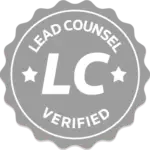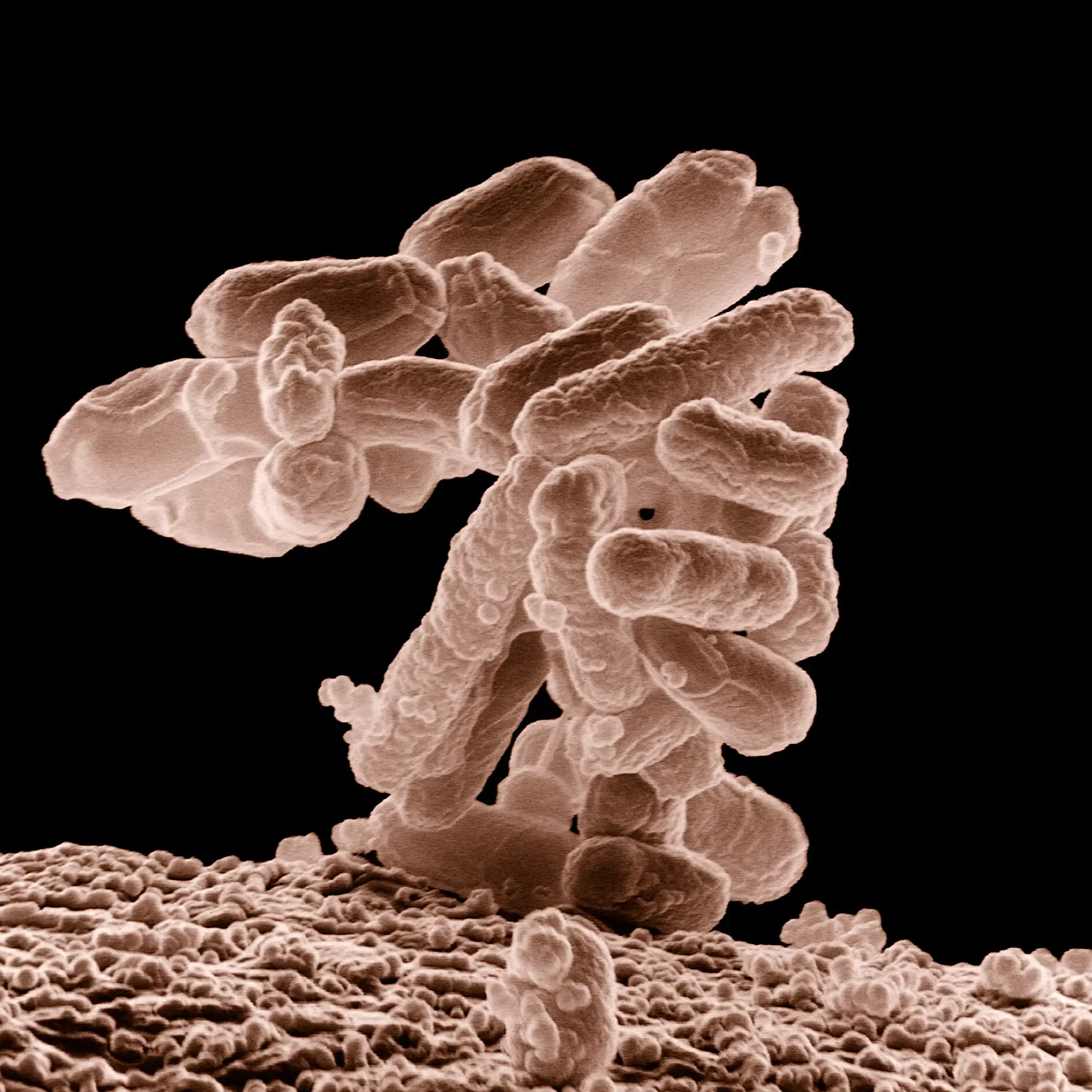Denver
(303) 214-7927What Makes Us Different, Makes Us Better!
Food Poisoning Attorneys: Protecting Your Rights After Foodborne Illness
Did you know that an estimated 48 million Americans get sick from foodborne illnesses annually, with 128,000 hospitalizations and 3,000 deaths as a result? According to the Centers for Disease Control and Prevention (CDC), these numbers reveal the serious and often underestimated threat that food poisoning poses in the United States. Similarly, the Food and Drug Administration (FDA) warns that outbreaks of dangerous pathogens like Listeria, E. coli, and botulism can occur at any point in the food supply chain, leaving consumers at risk of severe health complications.
At Ramos Law, we understand the devastating impact food poisoning can have on your health and well-being. Led by Joseph Ramos, MD, JD, our firm is uniquely positioned to provide expert legal representation, thanks to Dr. Ramos’s dual background as both a medical doctor and an attorney. This combination of legal and medical expertise allows us to approach food poisoning cases with a deeper understanding of the medical issues involved, helping victims navigate the complexities of the legal process.
Our team is dedicated to helping victims of foodborne illnesses seek justice and compensation for their suffering. Whether it’s Listeria from contaminated deli meats or E. coli from undercooked meats, Ramos Law ensures that those responsible are held accountable. If you or a loved one has been affected by food poisoning, we’re ready to help you pursue the compensation you deserve.
We Fight for Victims of Food Poisoning
Understanding Foodborne Illness: What is Food Poisoning?
Food poisoning, also known as foodborne illness, is caused by consuming contaminated food or beverages. It occurs when harmful bacteria, viruses, or parasites make their way into the food supply, causing a range of health issues. According to the Centers for Disease Control and Prevention (CDC), the most common culprits include bacteria like Salmonella and E. coli, viruses like norovirus, and parasites such as Toxoplasma gondii. These pathogens can contaminate food at any point from production to consumption due to poor handling practices or unsafe storage conditions.
Most Dangerous Types of Food Poisoning
Listeria, E. coli, and Botulism are among the most dangerous causes of food poisoning in the USA. Listeria threatens pregnant women and those with weak immune systems, while E. coli can lead to kidney failure. Though rare, Botulism can be fatal due to paralysis.
Listeria: A Serious Threat to Vulnerable Populations
Listeria monocytogenes is a bacterium that poses a serious risk to certain populations, including pregnant women, newborns, the elderly, and those with weakened immune systems. According to the CDC, about 1,600 people contract Listeria infections in the U.S. annually, with around 260 fatalities. The bacteria are commonly found in refrigerated, ready-to-eat foods like deli meats, soft cheeses, and unpasteurized dairy products. Listeria infections can lead to miscarriage, stillbirth, or life-threatening infections in newborns, making early detection and treatment crucial.
E. coli: Dangerous Strains and Severe Complications
Certain strains of Escherichia coli (E. coli), particularly Shiga toxin-producing E. coli (STEC), can cause severe foodborne illnesses. These infections are typically associated with undercooked ground beef, raw vegetables, and contaminated water. While most E. coli infections cause symptoms like diarrhea and abdominal cramps, some cases can result in hemolytic uremic syndrome (HUS). This potentially fatal complication can lead to kidney failure. According to the CDC, approximately 5–10% of those diagnosed with STEC infection develop HUS, which requires immediate medical attention.
Botulism: A Rare but Highly Fatal Foodborne Illness
Although rare, botulism is one of the most dangerous forms of food poisoning. Caused by Clostridium botulinum, this neurotoxin can lead to paralysis and, if left untreated, death. The Centers for Disease Control (CDC) reports that improperly canned or preserved foods are the most common sources of botulism, particularly home-canned goods. While an average of 110 cases are reported annually in the U.S., the fatality rate for untreated botulism can be as high as 50%, making rapid medical intervention critical.
Recognizing Food Poisoning: Symptoms, Sources, & Onset Table
Food poisoning can strike quickly and with varying severity. This table outlines common causes of foodborne illness, their typical symptoms, usual sources of contamination, and the typical onset time – how long it takes for symptoms to appear after eating contaminated food. Knowing this information can help you identify potential food poisoning and seek appropriate medical care.
| Foodborne Illness | Symptoms | Onset | Common Sources |
|---|---|---|---|
| Staphylococcus aureus (Staph food poisoning) | Nausea, vomiting, stomach cramps, diarrhea | 30 minutes to 8 hours | Foods that are not cooked after handling (e.g., sliced meats, puddings, pastries, sandwiches) |
| Vibrio | Watery diarrhea, nausea, stomach cramps, vomiting, fever, chills | Within 24 hours | Raw or undercooked shellfish, particularly oysters |
| Clostridium perfringens | Diarrhea, stomach cramps lasting less than 24 hours. Vomiting and fever are uncommon. | 6 to 24 hours | Meat, poultry, gravies, and foods cooked in large batches and held at unsafe temperatures |
| Salmonella | Diarrhea (can be bloody), fever, stomach cramps, vomiting | 6 hours to 6 days | Raw or undercooked chicken, turkey, and other meats; eggs; unpasteurized (raw) milk and juice; raw fruits and vegetables; animals like backyard poultry, reptiles, amphibians, small mammals |
| Norovirus | Diarrhea, vomiting, nausea, stomach pain, possible fever, headache, and body aches | 12 to 48 hours | Leafy greens, fresh fruits, shellfish (raw oysters), contaminated water, infected people, surfaces with the virus |
| Clostridium botulinum (Botulism) | Difficulty swallowing, muscle weakness, double/blurred vision, drooping eyelids, slurred speech, difficulty moving eyes. Symptoms progress from the head down. | 18 to 36 hours | Improperly canned or fermented foods, homemade alcohol (pruno) |
| Campylobacter | Diarrhea (often bloody), fever, stomach cramps | 2 to 5 days | Raw or undercooked poultry, raw (unpasteurized) milk, contaminated water, pets (including cats and dogs) |
| E. coli (Escherichia coli) | Severe stomach cramps, diarrhea (often bloody), vomiting. Long-term effects: 5–10% of people develop hemolytic uremic syndrome (life-threatening kidney failure). | 3 to 4 days | Raw or undercooked ground beef, raw (unpasteurized) milk and juice, raw vegetables (lettuce), raw sprouts, contaminated water |
| Cyclospora | Watery diarrhea, loss of appetite, weight loss, stomach cramps, bloating, gas, nausea, fatigue | 1 week | Raw fruits, vegetables, and herbs |
| Listeria (invasive illness) | Fever, flu-like symptoms (muscle aches, fatigue), headache, stiff neck, confusion, loss of balance, seizures. Pregnant women: risk of miscarriage, stillbirth, or premature birth. | Around 2 weeks | Queso fresco and other soft cheeses, raw sprouts, melons, hot dogs, pâtés, deli meats, smoked fish, raw (unpasteurized) milk |
Food Poisoning: When to Seek Medical Attention
While many cases of food poisoning resolve on their own within a few days, certain symptoms should not be ignored and require immediate medical care:
- High fever (temperature over 101.5°F or 38.6°C)
- Bloody stools
- Prolonged vomiting or inability to keep liquids down
- Signs of dehydration (dry mouth, little to no urination, dizziness)
- Severe abdominal pain or persistent diarrhea lasting more than three days
If you or a loved one experience any of these symptoms, especially in vulnerable groups like children, the elderly, or those with weakened immune systems, seeking prompt medical attention can prevent serious health complications.
We Fight for Victims of Foodborne Illness
Food Safety: Who is Liable for Food Poisoning?
Negligence in Food Safety: Legal negligence occurs when there’s a failure to take reasonable care to prevent harm. In food safety, this means not adhering to established food handling, preparation, or storage standards that could prevent foodborne illnesses.
Potential Liable Parties:
- Restaurants: They must ensure food is prepared and served safely.
- Grocery Stores: Responsible for the quality and safety of food sold, including proper storage to avoid spoilage.
- Food Manufacturers: They can be held liable for contamination during processing or packaging.
- Food Distributors: Must transport and store food under conditions that prevent spoilage or contamination.
- Caterers: Obligated to deliver safe, contamination-free meals.
Examples of Negligence:
- Improper Food Handling and Storage: Not maintaining proper temperatures or hygiene.
- Undercooked Food: Serving food that hasn’t been cooked sufficiently to kill pathogens.
- Cross-Contamination: Mixing raw and cooked foods or using the same utensils without proper cleaning.
- Failure to Follow Safety Regulations: Not adhering to local, state, or federal food safety laws.
Seeking Compensation:
Victims of food poisoning can pursue damages for:
- Medical Expenses: Costs for treatment, medication, and hospitalization.
- Lost Wages: If the illness or recovery period prevents work.
- Pain and Suffering: Compensation for physical pain and emotional distress.
- Other Damages: This can include punitive damages if the negligence was egregious.
Legal Precedents:
- Listeria Outbreaks: Blue Bell Creameries Ordered To Pay $17.25 Million In Criminal Penalties In Connection With 2015 Listeria Contamination
- E. coli Outbreaks: Chipotle Mexican Grill Agrees to Pay $25 Million Fine and Enter a Deferred Prosecution Agreement to Resolve Charges Related to Foodborne Illness Outbreaks
- Salmonella Cases: Former Peanut Company President Receives Largest Criminal Sentence in Food Safety Case; Two Others also Sentenced for Their Roles in Salmonella-Tainted Peanut Product Outbreak
Victims should consult with attorneys in food poisoning litigation, like those at Ramos Law. The dual expertise of a doctor-lawyer can be particularly beneficial in understanding and proving the health impacts of the food poisoning incident. Successful outcomes often depend on demonstrating clear negligence, having solid evidence like medical records, and sometimes, expert testimony to link the food poisoning to the defendant’s actions or inactions.
I suspect I got food poisoning from a restaurant or grocery store. What steps should I take?
Seek medical attention: If your symptoms are severe or you have concerns, see a doctor immediately. This helps ensure your well-being and creates a medical record of your illness.
Preserve evidence: Keep any leftover food, packaging, and receipts. These can help identify the source of contamination.
Report the incident: Contact your local health department to report the suspected food poisoning. They can investigate and potentially prevent further outbreaks.
Contact a food poisoning attorney: An experienced attorney can advise you on your legal rights and help you pursue compensation for medical bills, lost wages, and other damages.
How can I tell the difference between a stomach bug and food poisoning?
While symptoms of a stomach bug (viral gastroenteritis) and food poisoning overlap, here are some key differences:
- Onset time: Food poisoning symptoms often appear within hours of eating contaminated food, while a stomach bug may take longer to develop after exposure.
- Duration: Stomach bugs generally last longer (3-10 days), whereas food poisoning typically resolves within 1-3 days, depending on severity.
- Source: A stomach bug is typically viral and can spread from person to person, while food poisoning is often linked to contaminated food or beverages. To confirm, a medical professional may run tests to identify the cause of your illness.
What tests should I request if I suspect food poisoning?
To confirm food poisoning, a doctor may recommend:
- Stool sample tests: To detect bacteria, viruses, or parasites causing the illness.
- Blood tests: In severe cases, blood tests may be done to check for systemic infection.
- Urine tests: To check for complications such as dehydration or kidney issues, especially in cases of E. coli. Speak to your doctor about your symptoms and possible exposure so they can order the appropriate tests.
How long do I have to file a case after food poisoning?
The time you have to file a lawsuit, known as the statute of limitations, varies by state, but it generally ranges from 1 to 2 years from the date of the illness. It’s essential to consult with a food poisoning attorney as soon as possible to ensure your case is filed within the allowed time frame. Missing the deadline may prevent you from recovering compensation for medical expenses, lost wages, and other damages.
Who do I report food poisoning to?
Food poisoning should be reported to:
- Local health departments: They may investigate the source of contamination and inspect the restaurant or food supplier.
- The U.S. Food and Drug Administration (FDA): If your illness is related to a packaged food product, you can file a complaint through the FDA’s consumer complaint system.
- The Centers for Disease Control and Prevention (CDC): For widespread outbreaks, the CDC tracks cases and coordinates public health responses.
Contact a Food Poisoning Attorney Now

McDonald’s Quarter Pounders E. coli Outbreak
One person has died, and 90 others have become ill across 13 states due to an E. coli outbreak linked to the raw onions in McDonald’s Quarter Pounders, according to the CDC. Updated: 10/30/2024 Multi-State E. coli Outbreak Linked to McDonald’s Quarter Pounders A multi-state E. coli O157 outbreak tied

Using a Litigation Attorney for Food Poisoning Injuries
If you experience food poisoning after eating at a restaurant, you might consider contacting a litigation attorney to determine if you have legal recourse.








